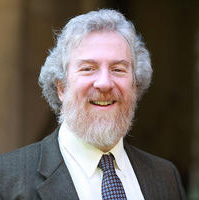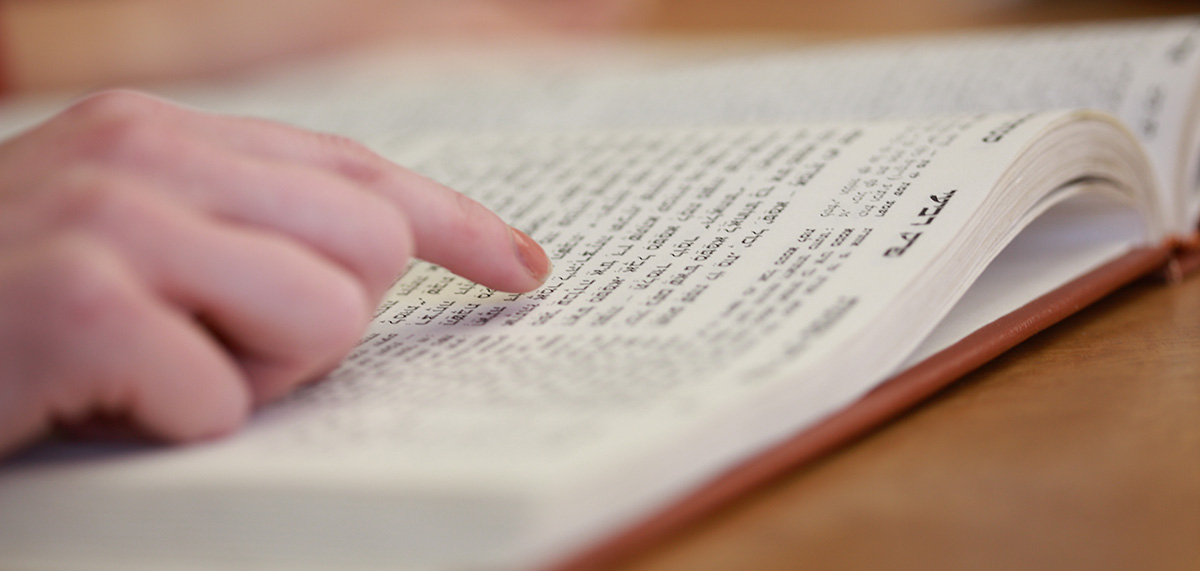Search Results
Back to JTS Torah Online's Main page
Shabbat Eve (Part 3): “Sit in the Dark, or Light Candles”
Jan 15, 2014 By Samuel Barth | Commentary
Lighting candles at home (and in some synagogues) is a deeply rooted practice among the Jewish people all over the world. A pair of candlesticks is often identified as among the most precious (Jewish) possessions of a family, and many people speak of the sense of ethereal peace that descends upon a household (or community) as the flames of the candles come to life and the blessing is chanted.
Read More
Shabbat Eve (Part 2): Shabbat Angels—Blessings or . . .
Jan 9, 2014 By Samuel Barth | Commentary
“Shalom aleikhem” is a traditional greeting exchanged upon encountering a friend or acquaintance, and also the opening phrase of the familiar song chanted around the Shabbat table before Friday night kiddush (Siddur Sim Shalom for Shabbat, 13, 309).
Read More
Shabbat Eve (Part 1): Metaphors of Marriage
Dec 16, 2013 By Samuel Barth | Commentary
Many are familiar with the custom of chanting the last chapter of Proverbs (Eishet Hayil; A Woman of Valor) as part of the ritual for those gathered around the table for Shabbat dinner on Friday night.
Read More
God’s Service: Atarah (Crown) or Tircha (Burden)?
Dec 12, 2013 By Samuel Barth | Commentary
Rabbinic sources deal not only with the texts of Jewish liturgy, and the occasions and times at which they are to be said. Our Sages from the earliest times engaged with what we might call “ritual process” or, more informally, the experience of “sitting in shul.” From most ancient times until the day before yesterday, there has been debate and discussion about how to go about this—where to sit, in what language to pray, how many people to “call up,” how long should the Torah reading be, and how long is “too long”—even for the most beautiful and soulful worship?
Read More
Texts and Songs—“First Fruits” Journey into Shabbat
Dec 4, 2013 By Samuel Barth | Commentary
Let us look at the journey of Shabbat liturgy, a journey of text and music. The formal liturgy of Kabbalat Shabbat (Welcoming Shabbat, the Friday evening service) begins with a series of six psalms (Pss. 95–99 and 29) followed by Lekha Dodi. A generation ago, almost all siddurim and services began with “Lekhu neranena . . . ” (the opening of Psalm 95), perhaps preceded by a reading or devotional prayer.
Read More
First Word: “Thanks—Modeh”
Nov 27, 2013 By Samuel Barth | Commentary
I recall learning Hebrew at the breakfast table from my polyglot father, who spoke 10 languages, saying “todah” (thanks) or “todah rabbah” (thank you very much) as occasion demanded—which in England it did a lot. The formality of prayerful English kept hidden from me the extent to which giving thanks (thanksgiving) fills our liturgy, literally from the very first word.
Read More
Study of Ritual—Study as Ritual (Part 2)
Nov 20, 2013 By Samuel Barth | Commentary
Last week, we looked at the three blessings recited traditionally each day, affirming that the study of Torah is a mitzvah, a source of beauty for all generations, and that God is (continually) giving Torah (Siddur Sim Shalom for Weekdays, 4). Today we explore an unusual type of textual engagement that follows these blessings, both immediately and through the unfolding cycle of the siddur. The blessings are followed directly by three texts (ibid., 5): the birkat kohanim (Priestly Blessing, Num, 6:24–26); a selection from the Mishnah (Pe’ah1:1); and a selection from the Talmud (BT Shabbat 127a). Each of them is intriguing.
Read More
Study of Ritual – Study as Ritual
Nov 13, 2013 By Samuel Barth | Commentary
We do not study Torah primarily to find out what God wants us to do, and we certainly do not study our sacred texts to learn history, or medicine. The act of Talmud Torah, the studying of Torah, is itself a mitzvah, a command. As with many commandments (eating matzah, putting on tefillin, etc), there is a berakhah, a blessing, that precedes the act. In Siddur Sim Shalom: A Prayerbook for Shabbat, Festivals, and Weekdays (4), we find three linked blessings about Torah.
Read More
The Anomaly of the Night: Fear, Power, Divine Presence (Shekhinah), Part 2
Nov 6, 2013 By Samuel Barth | Commentary
To the human heart and soul, night and morning are profoundly different, even though an astronomer would see them as equivalent observed consequences of the orbit of the earth around the sun. The first blessing of the evening service (Siddur Sim Shalom for Shabbat, 28) praises God for establishing the natural cycles: “You roll away light as darkness sets in, and darkness as the light dawns.” The morning service offers a tight structure of two blessings before, and one after, the Shema’ on the themes of Creation, Revelation, and Redemption (to be explored here in a future essay). Although the texts are a little different in the morning and the evening, the themes are identical.
Read More
Night: Fear, Power, Divine Presence (Shekhinah)
Oct 29, 2013 By Samuel Barth | Commentary
Transitions are times of vulnerability, anxiety, even fear. The mezuzah guides us through the transition between our home and the outside world. The words of the challenging, non-Israelite Prophet Balaam welcome us into the synagogue: “Mah Tovu (How beautiful are your tents O Jacob).” I wrote several reflections on the prayer texts that support us from sleep to wakefulness, giving thanks for soul and body restored to strength and vitality for another day.
Read More
Mizmor LeDavid (Psalm 23)—Time, Text, Melody
Oct 23, 2013 By Samuel Barth | Commentary
Psalm 23 is beloved in much of the English-speaking world for affirming a certainty of the divine presence—even in times of dread and adversity—in the most hauntingly beautiful language. The paean to the Psalm by 19th-century American pastor Henry Ward Beecher is widely cited.“The twenty third psalm is the nightingale of the Psalms. It is small, of a homely feather, singing shyly out of obscurity; but oh! it has filled the air of the whole world with melodious joy, greater than the heart can conceive” (Life Thoughts).
Read More
Prayer: Invitation and Outcry
Oct 16, 2013 By Samuel Barth | Commentary
October is Domestic Violence Awareness Month (DVAM), with many organizations and agencies working together to spread awareness and the understanding that this scourge is endemic in modern society—and that no religion and no sector of society is exempt. My friend and colleague Rabbi Lisa Gelber, associate dean of The Rabbinical School of The Jewish Theological Seminary, was invited by FaithTrust Institute to write the “Universal Prayer” for the call of unity that opened DVAM, and the National Resource Center on Domestic Violence (which convened the call) then created artwork to frame the prayer on a flyer. The prayer has found wide acceptance and recognition.
Read More
Words of Prayer: New and Old
Oct 9, 2013 By Samuel Barth | Commentary
“What Page Are We on in the Prayer Book Blues” is a lighthearted song made famous by a pair of Orthodox artists in the 1980s called the Megama Duo (start at 3 minutes and 22 seconds in the linked video). The song would never have become as (in)famous as it was if the experience of “not being able to find the place” was unfamiliar. But, on the contrary, we have all been there, and it’s good to laugh at, and with, ourselves. When we do find the place in our prayer books, we see lines and paragraphs and pages of text, and it is often hard to find ourselves in the words.
Read More
Simhat Torah: Which Way When the Circle Ends
Sep 23, 2013 By Samuel Barth | Commentary | Simhat Torah
The annual celebration of Simhat Torah brings great joy to so many of us of all generations, and it is a fitting and triumphant conclusion to the long and multifaceted season of intense Jewish observance and focus that began (a little before Rosh Hashanah) with Selichot. In Israel and in congregations observing a single day of festivals, Simhat Torah is blended with Shemini Atzeret, offering the intense experience in the morning of Hallel, Hakkafot (processions with dancing) and Geshem (the prayer for Rain).
Read More
Welcome Guests—Visible and . . .
Sep 16, 2013 By Samuel Barth | Commentary | Sukkot
The sukkah is fragile and temporary, yet stands as a symbol of joy and celebration. Rabbi Reuven Hammer, in his commentary Or Hadash (Siddur Sim Shalom, 331), reminds us of a debate about the meaning of Leviticus 23:43 (“You shall live in Sukkot for seven days . . . in order that future generations will recall that I made the Israelite People dwell in Sukkot when I brought them out of Egypt”): “Rabbi Eliezer said that [these sukkot] were clouds of glory and Rabbi Akiba said they were actual huts (B. Sukkah 11b).”
Read More
Ne‘ilah: Final Closing, or Not Quite?
Sep 11, 2013 By Samuel Barth | Commentary | Yom Kippur
“P’tach lanu sha’ar” (Keep open the gate for us) are the words of a fragment of a piyyut attributed to Elazar Kallir (6th century, Land of Israel) [see the Rabbinical Assembly’s Mahzor Lev Shalem, 414].
Read More
Zichronot (Memories)
Sep 3, 2013 By Samuel Barth | Commentary | Rosh Hashanah
In the three great themes of Rosh Hashanah, the encounter with memories (zichronot) is nestled between the power of sovereignty (malchuyot) and the triumphant, enigmatic sound of the shofar (shofarot). Zichronot reminds us that each of us is remembered, that our acts are significant, that we come, each of us individually, into the divine presence. In spite of the massive processing power of our machines, there are problems that cannot be solved—even if every computer on earth were to be harnessed in parallel.
Read More
Selichot: Body, Soul . . . “Will You Hear My Voice?”
Aug 28, 2013 By Samuel Barth | Commentary
This coming Saturday night in (Ashkenazi) synagogues around the world, congregations gather for the beginning of Selichot, the prayers and poems that inspire and guide us to seek forgiveness. Many of us will spend hours in the coming weeks turning through pages of ancient (and modern) words, hearing melodies and chants that have served so well as the pathway for the journey of the soul.
Read More
“No’am Adonai” (the Beauty of Adonai): Psalm 27 and Elul
Aug 14, 2013 By Samuel Barth | Commentary
“[L]ahazot beno’am Adonai ul’vaker b’heychalo” (To gaze upon the beauty of Adonai, and to visit in God’s sanctuary) [Ps. 27:4]d
Read More
Healing of Body and Soul (Part 2)
Aug 7, 2013 By Samuel Barth | Commentary
If an anthropology student from the University of Mars were to attend a Shabbat morning service in an American Jewish synagogue, what kind of understanding about our real synagogue lives might emerge in the student’s term paper on the topic? The essay might suggest that announcements and kiddush are the most important parts of the experience because that is when the most people are present. The Martian professor (whose appearance we will not explore here) might urge the student to be more subtle and to observe closely the body language of the human participants to discern which parts of the service are most engaging and important to those present.
Read MoreSUBSCRIBE TO TORAH FROM JTS
Our regular commentaries and videos are a great way to stay intellectually and spiritually engaged with Jewish thought and wisdom.




